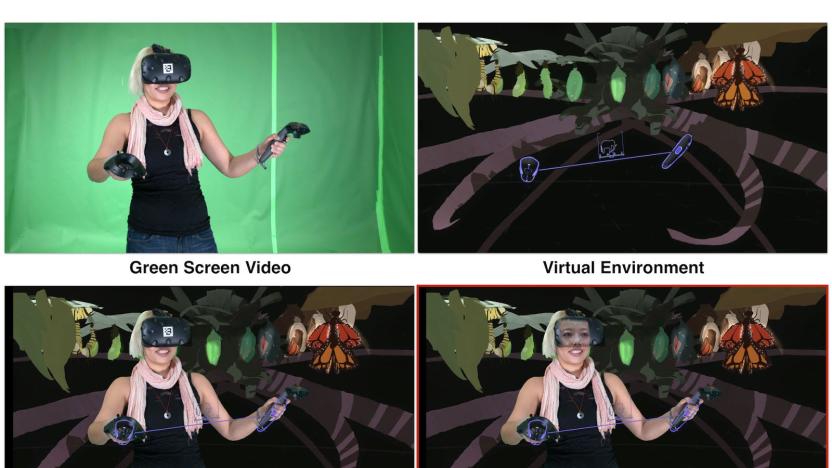googleresearch
Latest

Google's mixed reality tech shows faces behind VR headsets
YouTube has already perfected the art of mixed reality videos that show the VR world and the real world at the same time. A great example is the video of Conan O'Brien's virtual trip to outer space taken when he visited YouTube's VR Lab. The video platform's technique still can't capture the whole picture, however, since VR headsets get in the way. Google Research and Daydream Labs had to team up to solve the problem, and they did just that with the help of machine learning, 3D computer vision and advanced rendering techniques.

Google and MIT can take reflection-free photos through windows
Who knew that reflection-free window photos were suddenly in vogue? Google and MIT do, apparently. Some of their researchers have developed an algorithm that eliminates unwanted visuals by using frames from a short video to separate the foreground from the background. Unlike an earlier MIT-only technique, this works with nearly any kind of obstruction. It'll remove rain drops and chain link fences, for instance. And in an odd twist, it can also capture an uncannily clear image of any reflections -- you know, in case you want to remember what shirt you were wearing when you took that shot.

Google posts Windows 8.1 vulnerability before Microsoft can patch it
Google's Project Zero tracks vulnerabilities in software systems and reports them to vendors "in as close to real-time as possible" -- a noble cause, no? But what happens if said vendor then fails to push a fix within the 90-day window? Microsoft just found out: Google will go ahead and publish the bug anyway, complete with code that can be used to exploit it. A researcher found a Windows 8.1 security hole that allows lower-level users to become administrators, giving them access to sensitive server functions they'd normally have no right to. Though it remains unpatched by Microsoft, the Zero team published it several days ago -- right on schedule.

Google is mapping the history of modern music
It's no surprise that Google has been tracking music uploads, but what's unexpected is exactly what the search giant is doing with all of that info. Interactive maps of music's ongoing journey are charted through Play Music's users' libraries, found over on Google's Research Blog. You could, for example, trace the ebb and flow of a genre era by era (rock remains one of the biggies while electronica's presence is relatively new), or even identify which release from a band is the most prominent. Looking at the Deftones, their biggest album is 2000's White Pony, and they're near the top of the alt-metal heap overall. Music nerds could lose a few days poring over the various ins and outs of the soundtrack to their lives, so be careful who you share this with. Perhaps best of all, Google says this likely won't be the last collaboration we see between the research and music teams.

Google's Open Project mirrors Android apps on any connected touchscreen
Sure, Google already has Chromecast for throwing websites and media to big screens. The company's engineers believe they can go one better, however, with something called the Open Project framework. It's an effort to find a standardized way of mirroring not only content, but also touch inputs on a suitably equipped touchscreen or connected TV. Setting it up is simple: open the Open Project server webpage running on the machine connected to your chosen display, scan a QR code with your smartphone camera, and boom, you're ready to interact with your content and apps. It opens a world where people can collaborate on content or play multiplayer games without additional hardware or sensors. Open Project remains a proof-of-concept for now, or perhaps a plaything for UI-obsessed billionaires, but check out the video to see where the technology might take us in the future.




